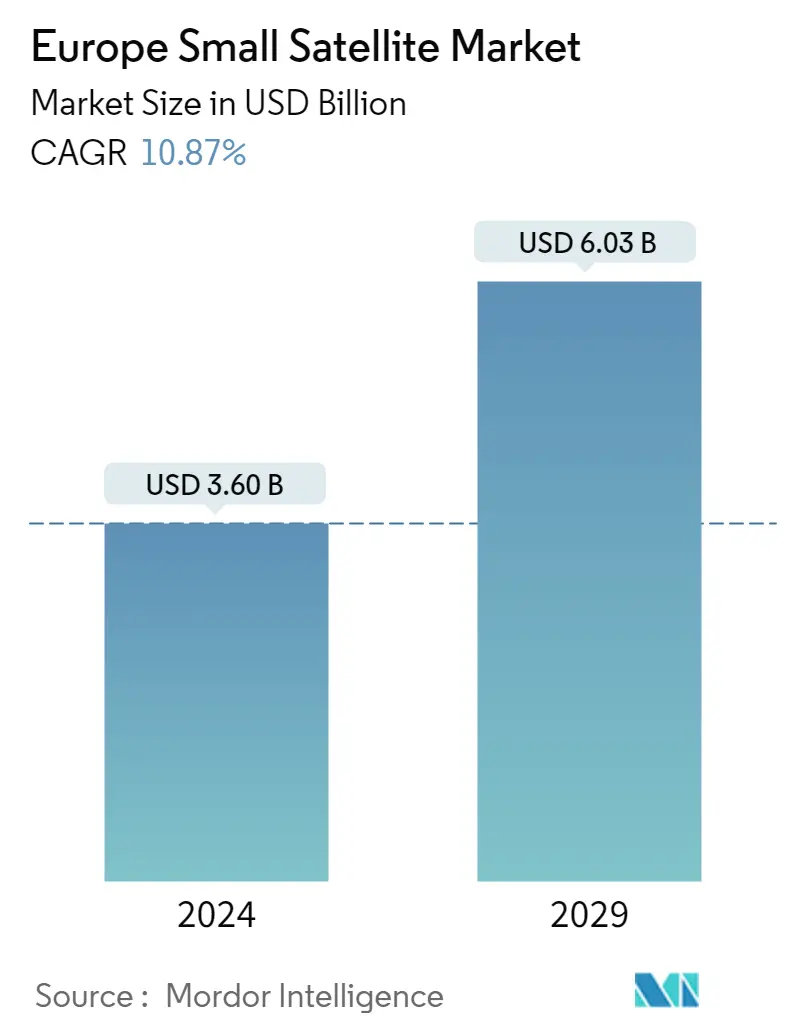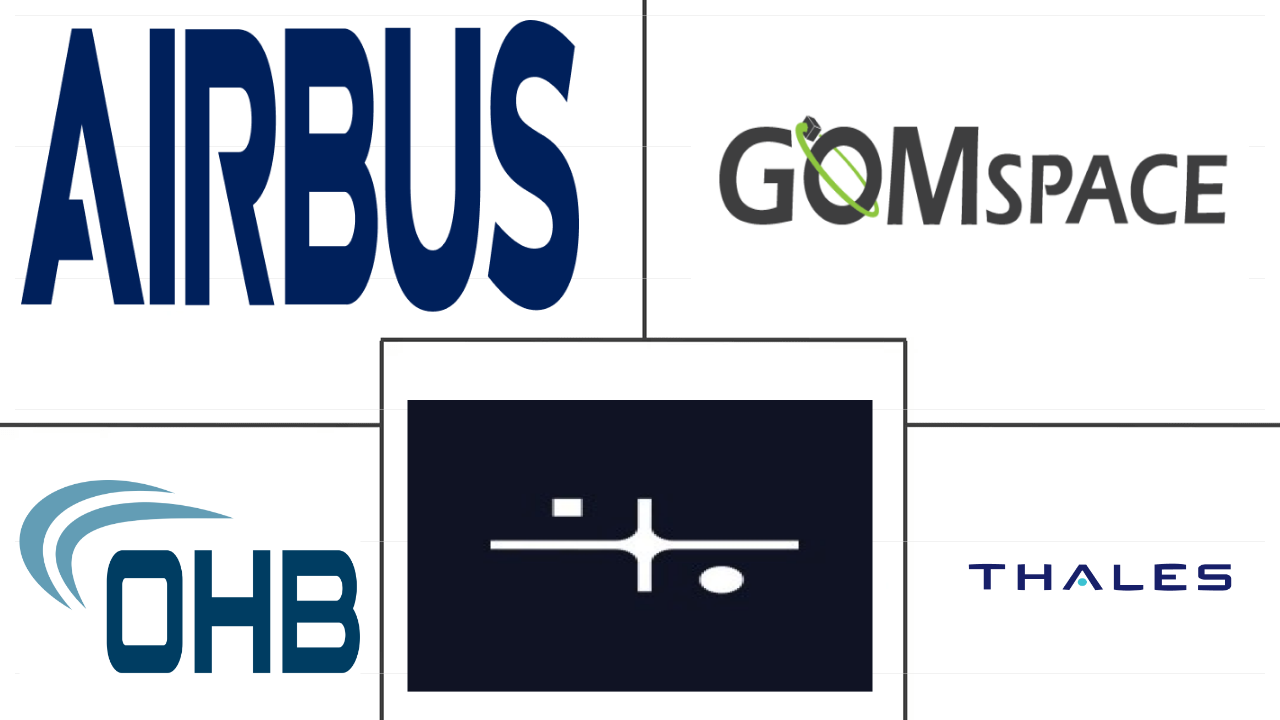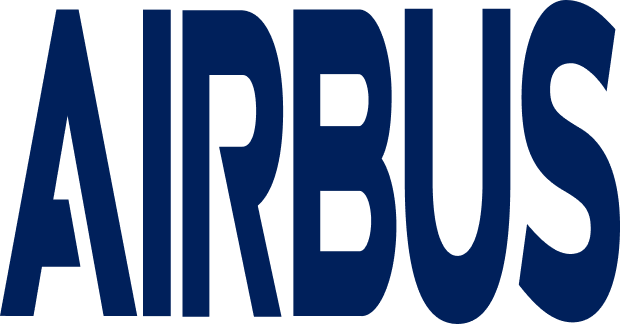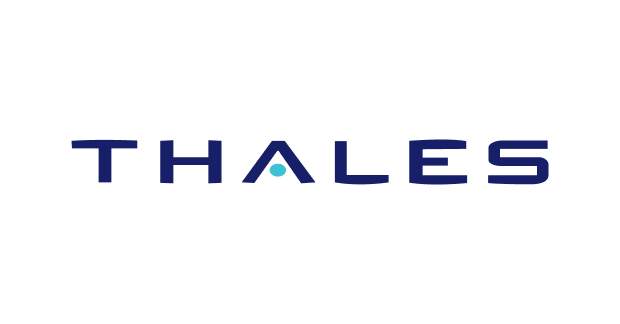Market Size of europe small satellite Industry

|
|
Study Period | 2017 - 2029 |
|
|
Market Size (2024) | USD 3.60 Billion |
|
|
Market Size (2029) | USD 6.03 Billion |
|
|
Largest Share by Orbit Class | LEO |
|
|
CAGR (2024 - 2029) | 10.87 % |
|
|
Largest Share by Country | United Kingdom |
Major Players |
||

|
||
|
*Disclaimer: Major Players sorted in no particular order |
Europe Small Satellite Market Analysis
The Europe Small Satellite Market size is estimated at USD 3.60 billion in 2024, and is expected to reach USD 6.03 billion by 2029, growing at a CAGR of 10.87% during the forecast period (2024-2029).
3.60 Billion
Market Size in 2024 (USD)
6.03 Billion
Market Size in 2029 (USD)
86.15 %
CAGR (2017-2023)
10.87 %
CAGR (2024-2029)
Largest Market by Satellite Subsystem
25 %
value share, Structures, Harness & Mechanisms, Harness & Mechanisms
The demand for these propulsion systems is driven by the launch of mass satellite constellations into space. They are used for transferring the spacecraft into orbit.
Largest Market by Application
95.62 %
value share, Communication, 2022
Governments, space agencies, defense agencies, private defense contractors, and private space industry players are emphasizing the enhancement of the communication network capabilities for various public and military reconnaissance applications.
Largest Market by Orbit Class
99.74 %
value share, LEO, 2022
LEO satellites are increasingly being adopted in modern communication technologies as they play an important role in Earth observation applications.
Leading Market Player
96.97 %
market share, Airbus SE, 2022

Airbus is the leading player in the European small satellite manufacturing market, with a robust distribution channel. Airbus has six major manufacturing sites in the region that help consolidate its market share.
Second Leading Market Player
2.36 %
market share, Thales, 2022

Thales is the second-leading player in the market. In Europe, the company has sales offices and customer centers in more than 15 countries. It has supplied 237 small satellites in the region.
LEO satellites occupies a major market share of 98.8% in 2029
- Small satellites have revolutionized the space industry in recent years as they have enabled low-cost access to space for a wide range of applications, from scientific research to commercial and military applications. To fully realize the potential of small satellites, it is essential to understand the different types of orbits they can be launched into.
- For instance, LEO is the most common orbit for small satellites, as it provides a number of advantages, such as providing a low-latency communication link with the ground and making it ideal for applications that require real-time data transmissions, including telecommunication, remote sensing, or Earth observation. In the region, during 2017-2022, a total of 504 satellites were launched into LEO. Of these 531 satellites, nearly 443 satellites were launched for communication purposes.
- On the other hand, GEO is used primarily for communication and broadcast applications, as satellites in GEO orbit appear stationary from the ground. This allows continuous coverage of a specific area, such as a continent or ocean region. In Europe, companies such as Intelsat have launched a constellation of small satellites to provide telecommunication services to their customers.
- MEO is a less frequently used orbit for small satellites. It offers some unique advantages as the higher altitude of MEO facilitates a larger coverage area compared to LEO, which is important for applications like technology demonstration and navigation/GPS that require global coverage. These advancements are projected to result in a 88% growth rate for this segment by 2029, surpassing the figures in 2023.
Europe Small Satellite Industry Segmentation
Communication, Earth Observation, Navigation, Space Observation, Others are covered as segments by Application. GEO, LEO, MEO are covered as segments by Orbit Class. Commercial, Military & Government are covered as segments by End User. Electric, Gas based, Liquid Fuel are covered as segments by Propulsion Tech.
- Small satellites have revolutionized the space industry in recent years as they have enabled low-cost access to space for a wide range of applications, from scientific research to commercial and military applications. To fully realize the potential of small satellites, it is essential to understand the different types of orbits they can be launched into.
- For instance, LEO is the most common orbit for small satellites, as it provides a number of advantages, such as providing a low-latency communication link with the ground and making it ideal for applications that require real-time data transmissions, including telecommunication, remote sensing, or Earth observation. In the region, during 2017-2022, a total of 504 satellites were launched into LEO. Of these 531 satellites, nearly 443 satellites were launched for communication purposes.
- On the other hand, GEO is used primarily for communication and broadcast applications, as satellites in GEO orbit appear stationary from the ground. This allows continuous coverage of a specific area, such as a continent or ocean region. In Europe, companies such as Intelsat have launched a constellation of small satellites to provide telecommunication services to their customers.
- MEO is a less frequently used orbit for small satellites. It offers some unique advantages as the higher altitude of MEO facilitates a larger coverage area compared to LEO, which is important for applications like technology demonstration and navigation/GPS that require global coverage. These advancements are projected to result in a 88% growth rate for this segment by 2029, surpassing the figures in 2023.
| Application | |
| Communication | |
| Earth Observation | |
| Navigation | |
| Space Observation | |
| Others |
| Orbit Class | |
| GEO | |
| LEO | |
| MEO |
| End User | |
| Commercial | |
| Military & Government | |
| Other |
| Propulsion Tech | |
| Electric | |
| Gas based | |
| Liquid Fuel |
Europe Small Satellite Market Size Summary
The European small satellite market is experiencing significant growth, driven by technological advancements and increasing demand for cost-effective space solutions. Small satellites, particularly nano and microsatellites, have transformed the space industry by providing affordable access to space for various applications, including scientific research, telecommunications, and Earth observation. The market is characterized by a robust framework for designing and manufacturing small satellites tailored to specific application profiles. This trend towards smaller satellites is supported by their shorter development times and flexibility, allowing for quicker responses to technological opportunities. The market's expansion is further bolstered by strategic investments and initiatives across Europe, such as funding from the UK Space Agency and Spain's commitment to the European Space Agency, which aim to enhance local space capabilities and foster innovation.
The market's growth trajectory is underpinned by the increasing number of satellite launches and the strategic use of different orbits, such as LEO, GEO, and MEO, to meet diverse operational needs. LEO is particularly popular for its low-latency communication advantages, while GEO is favored for communication and broadcast applications due to its stationary nature. The presence of major industry players like Airbus SE, GomSpaceApS, OHB SE, SatRev, and Thales contributes to the market's consolidation and competitive landscape. These companies are actively involved in launching new technologies and satellites, as evidenced by recent projects in Germany and Spain. The European small satellite market is poised for continued growth, with projections indicating substantial increases in market size and share over the forecast period.
Europe Small Satellite Market Size - Table of Contents
-
1. MARKET SEGMENTATION (includes market size in Value in USD, Forecasts up to 2029 and analysis of growth prospects)
-
1.1 Application
-
1.1.1 Communication
-
1.1.2 Earth Observation
-
1.1.3 Navigation
-
1.1.4 Space Observation
-
1.1.5 Others
-
-
1.2 Orbit Class
-
1.2.1 GEO
-
1.2.2 LEO
-
1.2.3 MEO
-
-
1.3 End User
-
1.3.1 Commercial
-
1.3.2 Military & Government
-
1.3.3 Other
-
-
1.4 Propulsion Tech
-
1.4.1 Electric
-
1.4.2 Gas based
-
1.4.3 Liquid Fuel
-
-
Europe Small Satellite Market Size FAQs
How big is the Europe Small Satellite Market?
The Europe Small Satellite Market size is expected to reach USD 3.60 billion in 2024 and grow at a CAGR of 10.87% to reach USD 6.03 billion by 2029.
What is the current Europe Small Satellite Market size?
In 2024, the Europe Small Satellite Market size is expected to reach USD 3.60 billion.

